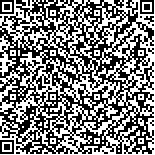刘金明,周芳,马艳,等.呼吸训练联合肌电生物反馈对脑梗死恢复期患者吞咽功能的影响[J].中华物理医学与康复杂志,2022,44(3):221-225
扫码阅读全文

|
| 呼吸训练联合肌电生物反馈对脑梗死恢复期患者吞咽功能的影响 |
|
| |
| DOI:10.3760/cma.j.issn.0254-1424.2022.03.007 |
| 中文关键词: 呼吸训练 肌电生物反馈 吞咽功能 脑梗死 |
| 英文关键词: Breathing training Electromyography Biofeedback Swallowing function Cerebral infarction |
| 基金项目:湖北省自然科学基金一般项目(2012FFB05801) |
|
| 摘要点击次数: 5000 |
| 全文下载次数: 6742 |
| 中文摘要: |
| 目的 观察呼吸训练联合肌电生物反馈对脑梗死恢复期患者吞咽功能的影响。 方法 选取脑梗死恢复期伴吞咽障碍的患者96例,按随机数字表法将其分为对照组、生物反馈组、综合治疗组,每组32例。对照组接受常规吞咽障碍康复治疗,生物反馈组在对照组基础上接受肌电生物反馈训练,综合治疗组在生物反馈组基础上辅以呼吸训练。治疗前、治疗6周后(治疗后),采用渗透-误吸量表 (PAS)和功能性经口摄食量表(FOIS)评估3组患者的吞咽功能,并进行吞咽造影检查(VFSS),观察并记录患者的食管上括约肌(UES)开放情况、舌骨向前位移(HAM)、舌骨向上位移(HSM)。 结果 治疗前,3组患者FOIS、PAS、HAM、HSM、UES开放情况比较,差异无统计学意义(P>0.05)。与组内治疗前比较,3组患者治疗后FOIS、PAS、HAM、HSM、UES开放情况均显著改善(P<0.05)。治疗后,综合治疗组和生物反馈组上述指标较对照组改善,且综合治疗组治疗后FOIS评分[(5.32±1.19)分]、PAS评分[(2.40±1.17)分]、HAM[(35.21±11.01)mm]、HSM[(34.14±9.07)mm]、UES开放情况均优于生物反馈组(P<0.05)。 结论 呼吸训练联合肌电生物反馈可明显改善患者的舌骨运动功能和UES开放情况,提高吞咽功能,降低误吸风险。 |
| 英文摘要: |
| Objective To observe any effect of supplementing breathing training with electromyographic biofeedback in treating the swallowing function soon after a cerebral infarction. Methods A total of 96 cerebral infarction survivors with dysphagia were randomly divided into a control group, a biofeedback group and a comprehensive treatment group, each of 32. All received conventional rehabilitation treatment for dysphagia, while the biofeedback group was additionally provided with EMG biofeedback training and the comprehensive treatment group received both breathing training and the biofeedback training. Before and after 6 weeks of treatment, all were subjected to a swallowing contrast examination to observe the opening of the upper esophageal sphincter, the forward displacement of the hyoid bone, and the upward displacement of the hyoid bone. The Rosenbak Penetration-Aspiration Scale and Functional Imported Food Scoring were also used to evaluate their swallowing function. Results Before, there were no significant differences between the groups in terms of any of the measures. After the 6 weeks of treatment, all of the measurements had improved significantly in both groups, but the improvement in the biofeedback and comprehensive treatment groups on all of the measures was significantly greater than in the control group. The average values of the comprehensive treatment group were then superior to the biofeedback group′s averages. Conclusion Supplementing breathing training with EMG biofeedback can significantly improve the swallowing function of stroke survivors and reduce their risk of aspiration. |
|
查看全文
查看/发表评论 下载PDF阅读器 |
| 关闭 |